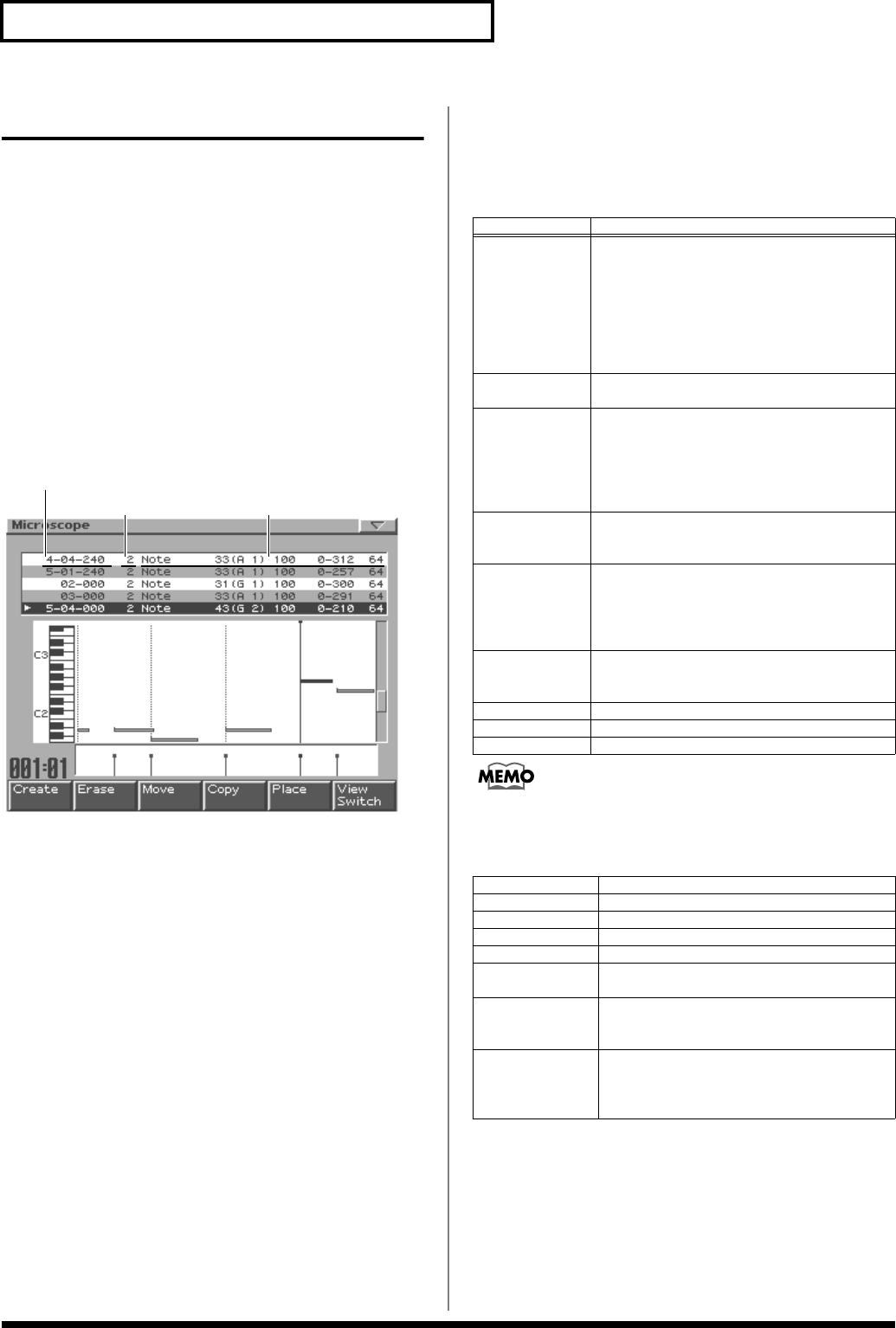
48
Pattern editing
Microscope
This lets you edit individual events of performance data within a
completed pattern.
* You must stop the pattern before you can edit it.
Basic procedure in the
Microscope
1.
Select the pattern that you want to edit.
2.
Press [F2 (Edit)] to access the Pattern Edit Menu
screen.
3.
Press [F1 (Micro Scope)] to access the Microscope
screen.
fig.1-50
4.
Use part buttons [1]–[16] and [TEMPO/MUTE] to
select the part that you want to edit.
5.
Use [CURSOR (up/down)] to select the performance
data that you want to edit.
6.
Use [CURSOR (left/right)] to select the parameter that
you want to edit.
7.
Use [VALUE] or [INC/DEC] to edit the value.
8.
Repeat steps
4
–
7
to continue editing.
9.
When you are finished, press [EXIT].
Performance data that can be
edited in the Microscope
The Microscope editor lets you edit the following nine types of data
(MIDI message).
System Exclusive, Tempo Change, and Mute Control are included in
the Tempo/Mute Part (p. 42).
Function buttons
* In the Microscope, you can press [ENTER] to transmit the currently
selected performance data from the MIDI OUT connector.
Location of the sequencer data (measure-beat-clock)
MIDI channel (Part) Sequencer data
MIDI message
Explanation
Note
Note data for playing sounds
From the left, the parameters are Note Num-
ber, which indicates the name of the note; On
Velocity, which specifies the force with which
the key is pressed; Duration (Beat-Tick),
which specifies the duration of the note; and
Off Velocity, which determines the speed
with which the key is released.
Program Change Messages that switch sounds (patches)
The program number (PC#) selects the sound.
Control Change Messages that can apply effects such as modula-
tion or portamento, depending on the controller
number of the message
The controller number (CC#) selects the func-
tion, and Value specifies the depth of the ef-
fect (function).
Pitch Bend Messages that change the pitch while you play
The value specifies the amount of pitch
change.
Poly Aftertouch Messages that apply aftertouch to individual
keys
From the left, the parameters are Note Num-
ber which specifies the key, and Value which
specifies the depth of the aftertouch.
Channel After-
touch
Messages that apply aftertouch to an entire
MIDI channel
Value specifies the depth of the aftertouch.
System Exclusive MIDI messages specific to the MC-909
Tempo Change Messages that change the tempo
Mute Control Mute data for each part
[F1 (Create)] Inserts new performance data.
[F2 (Erase)] Erases performance data.
[F3 (Move)] Moves performance data.
[F4 (Copy)] Copies performance data.
[F5 (Place)] Places performance data.
[F6 (View Switch)] Displays only specific data.
Data marked by “
✔
” will be displayed.
[SHIFT] +
[F1 (V-Zoom In)]
Narrow the range of keys shown in the display.
Use this when you want to view certain
notes at greater magnification.
[SHIFT] +
[F2 (V-Zoom Out)]
Expand the range of notes shown in the dis-
play.
Use this when you want to see which notes
have been input.
MC-909_Ref_e.book 48 ページ 2005年3月1日 火曜日 午後3時29分


















